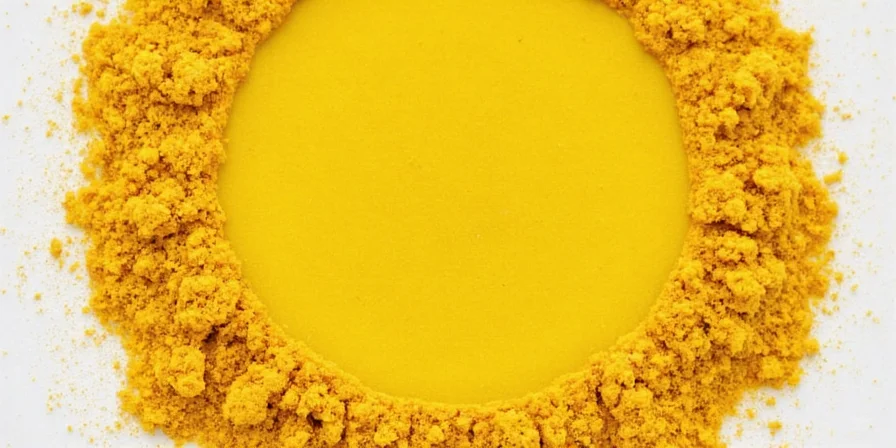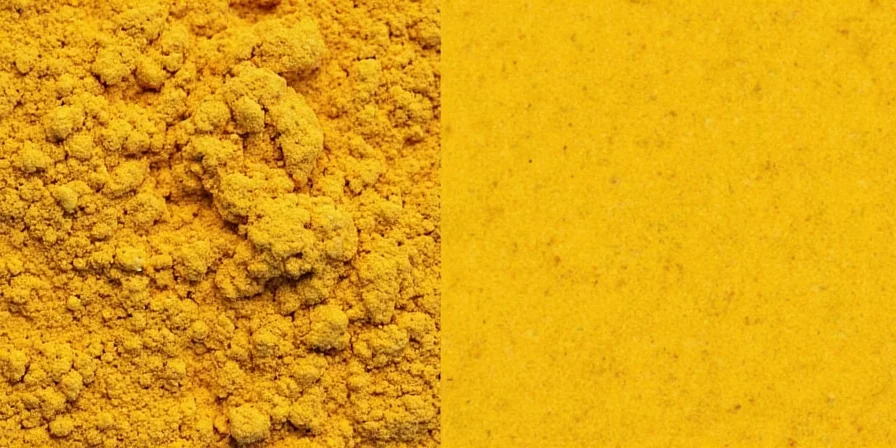This guide is crafted specifically for home cooks and culinary enthusiasts seeking to master vibrant, flavorful dishes. You'll gain actionable knowledge to confidently select, use, and store yellow spices while avoiding common pitfalls that diminish their impact. Discover how these golden-hued ingredients transform ordinary meals into extraordinary culinary experiences through practical techniques and science-backed insights.
Table of Contents
- Why Nature Paints Spices Yellow
- Top 7 Yellow Spices Decoded
- Flavor Science and Culinary Applications
- Pro Techniques for Maximum Impact
- Evidence-Based Wellness Properties
- Sustainability Considerations in Spice Sourcing
- Elevating Everyday Cooking
- Frequently Asked Questions
Why Nature Paints Spices Yellow
Nature's golden palette stems from specialized compounds developed through plant evolution. Carotenoids and curcuminoids serve dual purposes: attracting pollinators in living plants and protecting against environmental stressors. When harvested, these pigments deliver not just visual appeal but complex flavor chemistry. Turmeric's curcumin, for instance, interacts with heat and fat to unlock both its brilliant hue and bioactive properties—a phenomenon chefs leverage through precise cooking techniques.
Top 7 Yellow Spices Decoded
Understanding each spice's botanical origin reveals why their golden tones vary. Here's what distinguishes genuine quality:
- Turmeric (Curcuma longa rhizome)
- Saffron (Crocus sativus stigmas)
- Mustard Seeds (Brassica species)
- Paprika (Capsicum annuum peppers)
- Annatto (Bixa orellana seeds)
- Galangal (Alpinia galanga rhizome)
- Cumin (Cuminum cyminum seeds - light varieties)

Flavor Science and Culinary Applications
Each spice interacts uniquely with cooking variables. This table reveals critical usage insights beyond basic flavor descriptions:
| Spice | Optimal Activation Method | Flavor Transformation Tip | Color Stability Factor |
|---|---|---|---|
| Turmeric | Bloom in oil >350°F | Add black pepper to increase curcumin absorption by 2000% | Fades in alkaline environments |
| Saffron | Steep in warm liquid 20+ minutes | Use in rice dishes during water absorption phase | Light-sensitive; store in dark containers |
| Mustard Seeds | Toast in dry pan until pop | Add to cold oil before heating for even distribution | Color intensifies when ground |
| Paprika | Add in final cooking minutes | Smoked variety enhances umami in vegetarian dishes | Heat degrades color rapidly |
| Annatto | Infuse in oil for 5 minutes | Soak seeds before use to reduce bitterness | Most stable when fat-soluble |
| Galangal | Simmer 15+ minutes in liquid | Pair with lemongrass for authentic Thai profiles | Color fades with prolonged heat |
| Cumin | Dry toast before grinding | Add to dough for flatbreads during proofing | Oxidizes when ground |
Pro Techniques for Maximum Impact
Professional results require understanding chemical interactions:
- Timing is chemistry: Turmeric's color peaks at 7 minutes of cooking then fades—add to curries midway through simmering.
- Acid balance: Lemon juice stabilizes turmeric's hue but dulls paprika's vibrancy—adjust based on dominant spice.
- Fat selection: Coconut oil enhances curcumin solubility 3x better than olive oil for golden milk.
- Grinding science: Mustard seeds release enzymes that create heat only when mixed with liquid—grind dry for milder flavor.
- Color preservation: Store saffron threads with uncooked rice to absorb moisture and maintain potency.
Evidence-Based Wellness Properties
Research indicates potential benefits when incorporated into balanced diets:
- Turmeric: Clinical studies show curcumin may support joint health at 500mg daily doses.
- Saffron: Double-blind trials suggest 30mg daily may positively impact mood regulation.
- Mustard Seeds: Contain selenium levels supporting thyroid function when consumed regularly.
- Paprika: Capsanthin compounds demonstrate antioxidant activity in peer-reviewed research.
- Annatto: Tocotrienols show promise for cardiovascular health in preliminary studies.
Sustainability Considerations in Spice Sourcing
Climate change significantly impacts spice cultivation zones. Turmeric production faces challenges from erratic monsoons in India, while saffron farming in Kashmir contends with rising temperatures reducing flower yields. Ethical sourcing matters: Fair Trade certified turmeric supports 30% higher farmer incomes. When purchasing, look for certifications indicating water conservation practices—paprika production in Hungary now uses drip irrigation systems reducing water usage by 40% compared to traditional methods. These choices directly affect spice availability and quality for future generations.
Elevating Everyday Cooking
Mastering yellow spices transcends color addition—it's about understanding botanical chemistry to create layered flavors. The golden thread connecting these spices is their evolutionary purpose: survival mechanisms that become culinary superpowers in skilled hands. By applying precise activation methods and respecting their unique properties, home cooks can achieve professional results that delight the senses and contribute to dietary wellness. Remember that vibrant dishes start not with the spice itself, but with how you unlock its inherent potential through mindful cooking techniques.
Which yellow spice transformed your cooking recently? Share your experience below. Bookmark this guide for your next spice cabinet refresh!
Frequently Asked Questions
Why does turmeric stain cookware despite careful use?
Turmeric's curcumin binds strongly to proteins in stainless steel. Prevent stains by adding turmeric to oil first (not water), and clean pans immediately with baking soda paste. For persistent stains, soak in vinegar solution for 30 minutes before washing.
How can I verify saffron authenticity without lab testing?
Place threads in warm water: authentic saffron releases golden color gradually over 15+ minutes without dissolving. Fake versions (dyed corn silk) bleed color immediately. Also check for slight honey-like aroma and bitter taste—adulterated saffron often lacks these.
Which yellow spice provides the longest shelf life?
Whole mustard seeds maintain potency for 2-3 years when stored airtight in cool conditions. Ground spices typically last 6-12 months. For maximum longevity, freeze whole spices in vacuum-sealed containers—this preserves volatile oils responsible for both flavor and color stability.
Can yellow spices replace artificial food colorings?
Yes, but with technique adjustments. Annatto creates vibrant orange-yellow in cheeses, while turmeric works for pale yellows. Use 1/4 teaspoon powder per cup of liquid, and add acidic ingredients like lemon juice to stabilize color. Note that natural colors may shift with pH changes in final dishes.
Why do some recipes specify "toasted" versus "raw" yellow spices?
Toasting triggers Maillard reactions that develop complex flavors while reducing raw bitterness. Mustard seeds release allyl isothiocyanate (the compound giving heat) only when hydrated after toasting. Turmeric requires fat activation—dry toasting alone diminishes its benefits. Always follow recipe specifications for optimal results.











 浙公网安备
33010002000092号
浙公网安备
33010002000092号 浙B2-20120091-4
浙B2-20120091-4